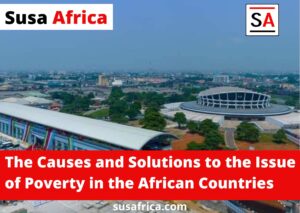South Africa’s economy greatly depends on these fastest growing industries. These are the sectors that directly influence the country’s Gross Domestic Product. Such industries also pose as very profitable investment opportunities since they are continually growing.
Given the country’s geographic location, South Africa is in the ideal position to develop into a regional manufacturing hub. The country’s is endowed with a very developed manufacturing industry. This is another diversified industry that has so many business opportunities. It correlates with the agricultural and mining sectors, hence there are efforts to ensure that the industry competes well globally. The manufacturing industry is the mother to the following sectors; chemicals, automotive, agro-processing, textiles, clothing, metals, and footwear.
South African economy was rooted in the policies of the apartheid era and our commission to the economists was transformed into a full-scale critique of the economics of apartheid. A key consequence of the failures of apartheid’s social and economic policies was its unproductive manufacturing sector. It was unable to produce basic goods of a suitable quality and at an affordable price; it was unable to produce goods that successfully penetrated international markets; it relied on low-paid, poorly-trained workers, and harsh, authoritarian shop-floor supervision; above all, it proved incapable of generating desperately needed employment. While manufacturing’s contribution to the global economy escalated, South Africa relied increasingly on its natural resource base and the cheap labour that mined and farmed it.
Manufacturing in South Africa has many facets and considerations one must consider when looking at the industry. It is the 4th largest industry in South Arica, and within the sector, the food and beverage category is the biggest player, contributing 26% to the total manufacturing value added. Petroleum and chemical products are second, at 24%, followed by basic iron and steel (19%).
The manufacturing industry rebounded in 2018, recording its highest annual growth rate in five years. The food and beverages and automotive divisions were the major drivers behind the rise. However, manufacturers in communication equipment, electrical machinery and clothing failed to perform. Manufacturing production increased by 1.2% in 2018 compared with 2017, according to Stats SA’s.
In 2019, South African manufacturing exports barely respond to a depreciating real exchange rate: the real exchange rate captures the differential between prices for traded and non-traded goods. South Africa’s long-term depreciation reflects the relative drop in productivity of South Africa’s manufacturing sector.
Data from Statistics South Africa indicates that annual output came out worse than markets expected in September 2019. Factory output contracted by 2.4 percent year-on-year (y-o-y) in September 2019 after shrinking by 1.8 percent in the previous month. On a seasonally adjusted month-on-month (m-o-m) basis, production shrank severely to 2.4 percent from growth of 1.9 percent. The main drag came from the basic iron and steel, non-ferrous metals, machinery, petroleum, chemical products, rubber and plastic products.
Meanwhile, the South African manufacturing sector see its seventh consecutive month of annual growth declines. Production in the sector plummeted by almost 6% year-on-year in December 2019.
Read Also: Ivory Coast’s Economy in Time of African Nations Cup
South Africa’s manufacturing production crashed 49.4% year-on-year in April of 2020, following an upwardly revised 5.5% slump March. The downturn in manufacturing output was extended for an eleventh consecutive month and was the sharpest on record, reflecting the strong impact of the global pandemic and a nationwide lockdown to control it. Output declines were seen across all categories, primarily motor vehicles, parts and accessories & other transport equipment (-98% vs -8.3%); glass and non-metallic mineral products (-83.4% vs -16.7%); textiles, clothing, leather & footwear (-75.5% vs -11.9%); furnishings (-83.5% vs -3.3%); basic iron and steel, non-ferrous metal products, metal products & machinery (-65.4% vs -8.3%); coke, petroleum products (-63.9% vs -21.7%) and rubber products (-77.2% vs -9%). On a seasonally adjusted monthly basis, manufacturing production plunged at a record 44.3%, after falling 1.2% in the prior month.
This sector represents a significant job market, valuable skill sets and critical economic power. In July 2020 despite Covid-19 pandemic manufacturing sector continued to signal a further month-on-month improvement for conditions, according to Absa Purchasing Managers’ Index (PMI).
More than half (52%) of the manufacturing industry’s national workforce resides in 3 metros; Johannesburg, Cape Town and eThekwini. In 2014, 25% of the national manufacturing workforce was recorded as being employed in Johannesburg. If one considers the statistics of the 9 provinces of South Africa, Gauteng employs that largest percentage of manufacturing workers, at 44%, Western Cape 19%, Kwazulu-Natal 19%, and the Eastern Cape 7%. All other provinces currently represent less than 5% each.
The number of people employed in the manufacturing sector has declined over the last few years. This number has gone from 1,44 million in 2005 to 1,19 million in 2014, to 1,1 million in 2019. Despite this, manufacturing has often been presented as one of the job sectors with the most promising potential to create jobs at respectable pay levels for unskilled and semi-skilled workers.
On 28 July 2020, Statistics South Africa (Stats SA) published the Quarterly employment statistics (QES) survey results for the first quarter of 2020. According to the survey, the formal non-agricultural sector shed 3 000 jobs in the first quarter of 2020. This brings the total number of persons employed in the formal non-agricultural sector in South Africa to 10,2 million. The survey further shows that three of the eight industries (trade, construction and manufacturing) reported a decrease quarter-on-quarter, while the electricity industry reported no change.
However, South African government has declared war on unemployment and seeks to create jobs by doing the following: Reversing spatial apartheid by building more homes near big cities where the work is; by introducing a policy that ensures that graduates are hired without work experience, by introducing skills programmes for young people to make them more employable; and by reducing the cost of data so that using the internet to apply for jobs can be cheaper, making the internet more accessible for the disenfranchised workers of South Africa.























Be First to Comment